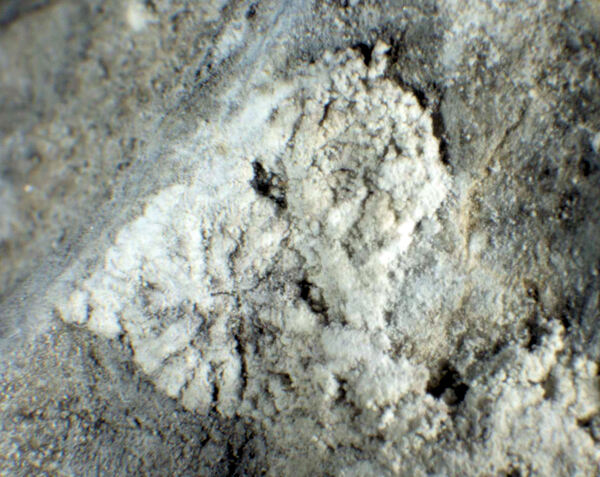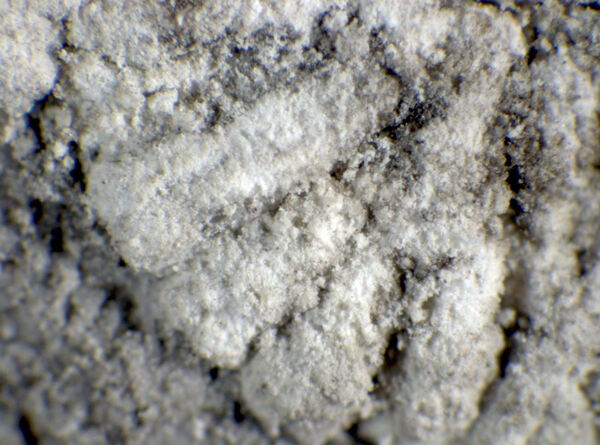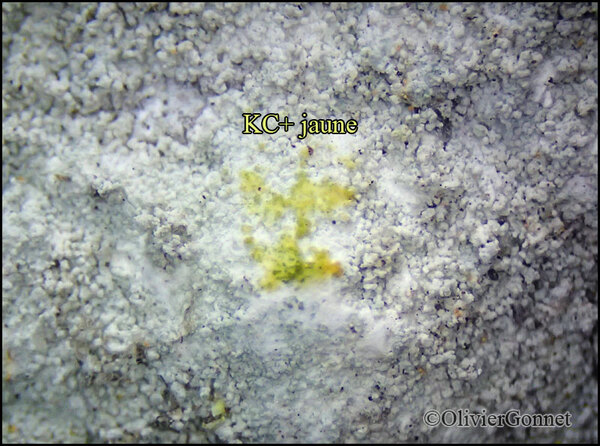Lecanora rouxii S. Ekman & Tønsberg
in Grube & al., Mycol. Res., 108: 12, 2004.
Synonyms: Lepraria flavescens Cl. Roux & Tønsberg; Lepraria flavescens Clauzade & Cl. Roux nom. inval.
Distribution: N - Ven (Nascimbene 2003, 2004, 2005c, Baruffo & al. 2006). C - Marc (Nimis & Tretiach 1999, Baruffo & al. 2006), Abr (Nimis & Tretiach 1999, Gheza & al. 2021).
Description: Thallus leprose, episubstratic, whitish to cream-coloured, clearly delimited, usually rosette-forming, often falling off in the central parts, consisting of a soft mass of soredia-like, up to 200 µm wide granules. Medulla white, well-developed and thick. Apothecia extremely rare, lecanorine, partly immersed to almost superficial, mostly 0.5-1 mm across, with a pinkish, pruinose disc reacting C+ and KC+ yellow and a more or less distinct, sorediate thalline margin. Mature asci and spores not known. Photobiont chlorococcoid. Spot tests: K+ yellow, C+ bright yellow, KC+ yellow-orange, P+ yellow, UV+ violet; apothecial disc C+ and KC+ bright lemon yellow. Chemistry: atranorin, eugenitol, flavescin, sordidone and 4 unknown substances.Note: on vertical or steeply inclined surfaces of weathered or fissured calcareous rocks seldom wetted by rain, often in woodlands, mostly in natural habitats; certainly more widespread. According to Grube & al. (2004) the species is closely related to Glaucomaria swartzii: if transferred to Glaucomaria, the specific epithet should be flavescens, based on Lepraria flavescens Cl. Roux & Tønsberg.
Growth form: Leprose
Substrata: rocks
Photobiont: green algae other than Trentepohlia
Reproductive strategy: mainly asexual, by soredia, or soredia-like structures (e.g. blastidia)
In underhangs rarely wetted by rain
Commonnes-rarity: (info)
Alpine belt: absent
Subalpine belt: absent
Oromediterranean belt: absent
Montane belt: rather rare
Submediterranean belt: rather rare
Padanian area: absent
Humid submediterranean belt: absent
Humid mediterranean belt: absent
Dry mediterranean belt: absent
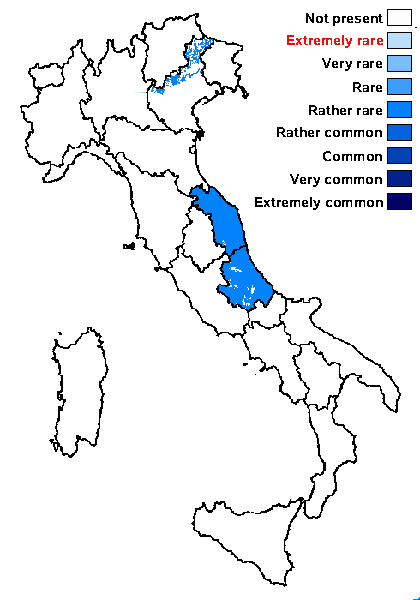
Predictive model
Herbarium samples
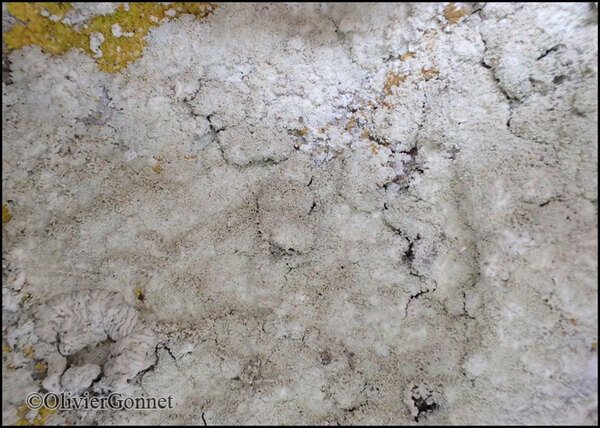
Courtesy Danièle et Olivier Gonnet - Source: https://www.afl-lichenologie.fr/Photos_AFL/Photos_AFL_L/Texte_L_3/Lecanora_rouxii.htm
France, session AFL 2015 dans le Lot, Blanzaguet
Growth form: Leprose
Substrata: rocks
Photobiont: green algae other than Trentepohlia
Reproductive strategy: mainly asexual, by soredia, or soredia-like structures (e.g. blastidia)
In underhangs rarely wetted by rain
Commonnes-rarity: (info)
Alpine belt: absent
Subalpine belt: absent
Oromediterranean belt: absent
Montane belt: rather rare
Submediterranean belt: rather rare
Padanian area: absent
Humid submediterranean belt: absent
Humid mediterranean belt: absent
Dry mediterranean belt: absent

Predictive model
| Herbarium samples |

 INDEX FUNGORUM
INDEX FUNGORUM
 GBIF
GBIF
 DOLICHENS
DOLICHENS
